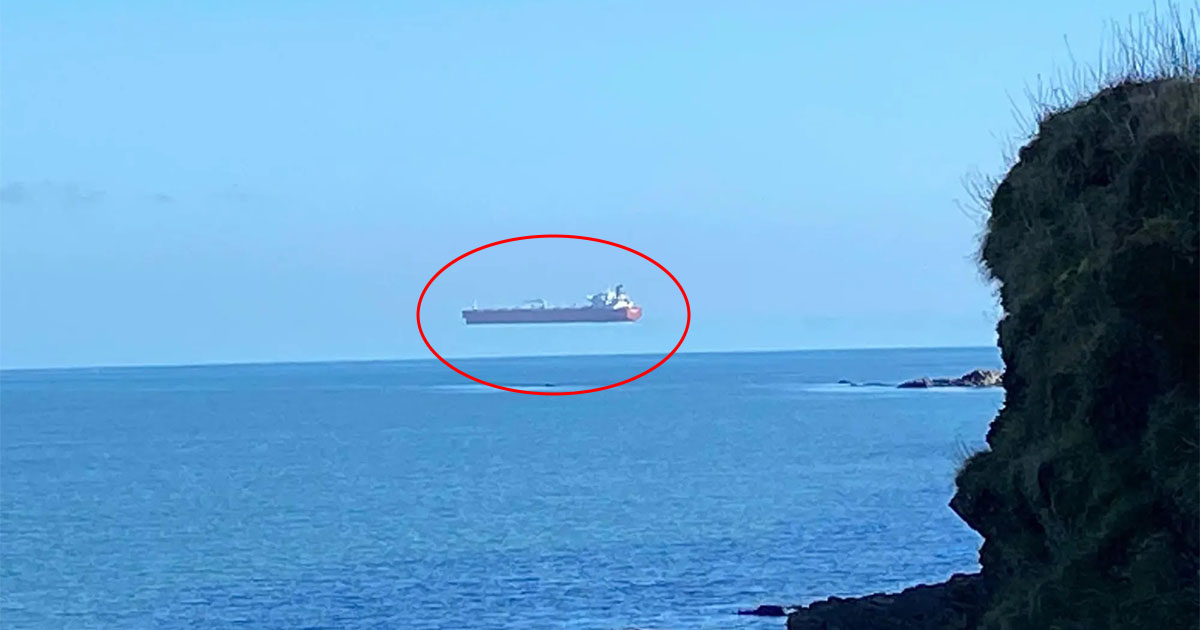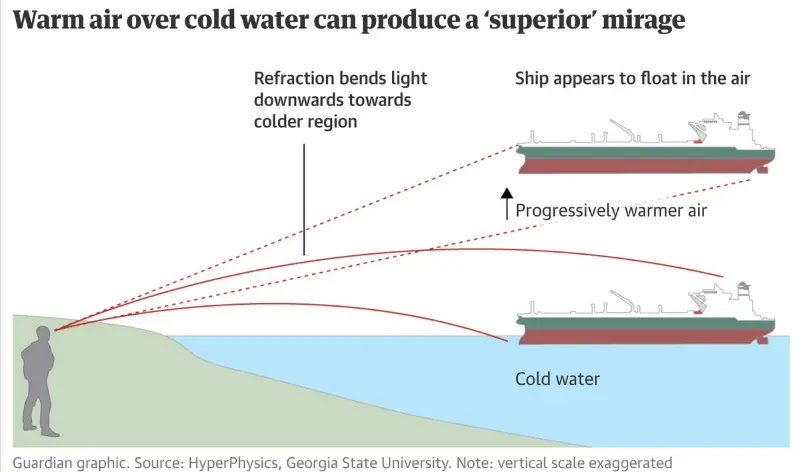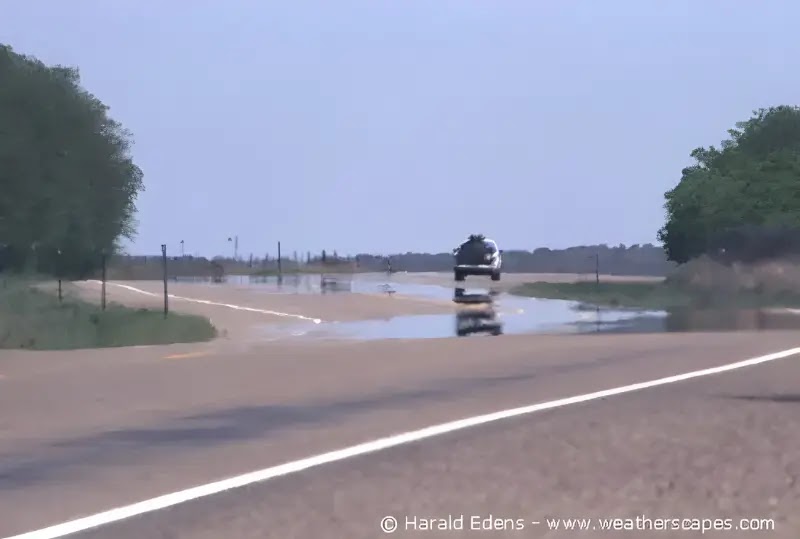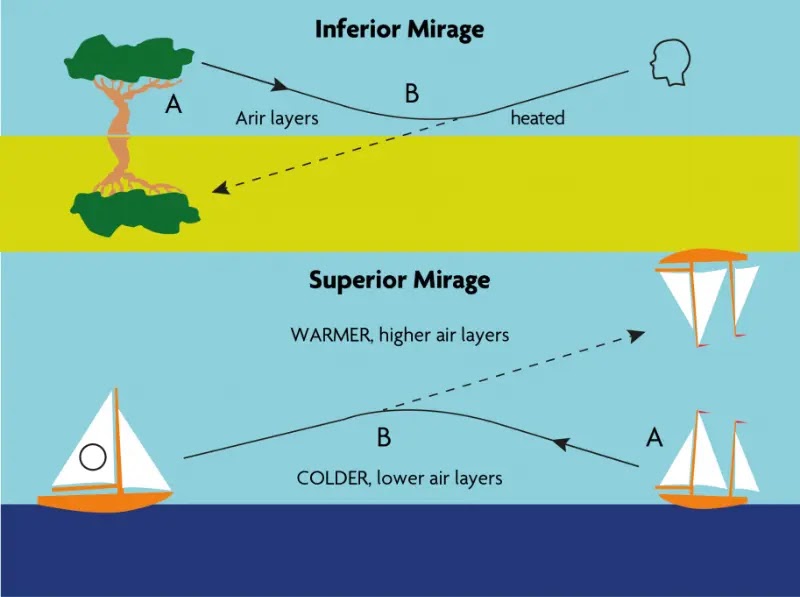
When out for a walk along the coast, David Morris comes across an unusual visual illusion known as superior mirage.
When one sees a ship obviously hovering over the sea while strolling down the English coast, there are just so many helpful terms that come to mind. When David Morris, who caught the incredible sight on camera, stared out to sea from a hamlet near Falmouth in Cornwall, he saw a massive tanker floating over the water and called himself “stunned.”
The phenomenon is an example of a superior mirage, which is an optical illusion. Such illusions are fairly common in the Arctic, but they may also occur in the UK during the winter when atmospheric conditions are favorable, though they are extremely unusual.
A temperature inversion is a meteorological effect that causes the illusion. Normally, as the altitude rises, the air temperature decreases, leaving the mountaintops cooler than the foothills. Hot air lies on top of a band of colder air in a temperature inversion, causing havoc with our sensory vision.
How this happens?

Cold air has a higher refractive index than warm air because it is denser. In the case of the “hovering ship,” this means that when the ship sails through the cooler waters, light beams from the ship are angled downwards, causing people on the shoreline to see it. This gives the impression that the ship is higher than it really is – in this case, above the water level.
“Superior mirages are caused by a weather phenomenon known as a temperature inversion, in which cold air is close to the sea and hot air is above it,” said BBC meteorologist David Braine. “Because cold air is denser than warm air, it bends light into the eyes of those standing on the ground or at the horizon, altering the appearance of a distant object.”

The atmosphere seems to be mirrored on the road as sunlight falling from the sky strikes the air above the hot surface and bends back upwards to the observer’s eye.
Superior vs Inferior Mirage
Sailors are familiar with the phenomenon of superior mirages, even if they are rarely seen from land or the coasts of the United Kingdom. When ships are mathematically beyond the horizon, sailors may be able to see them in an inferior mirage because they will appear to “loom” over the horizon.

When colder air rests over a layer of hot air, the light is refracted downwards and towards the viewer’s position below the horizon, creating an inferior mirage. Puddles on the side of the road, in the distance, on hot, dry days are also an effect of inferior mirages.
Have you ever experienced such a phenomenon? Please share with us in the below comments section…
No comments:
Post a Comment